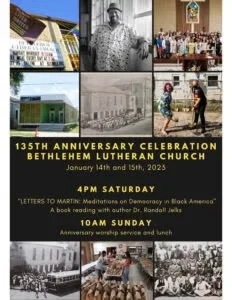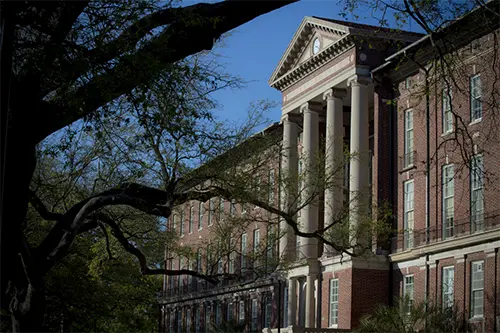Publicly Engaged Scholarship Graduate Fellows pursue projects in community-engaged scholarship. These projects resonate with graduate students’ personal and scholarly interests and are grounded in sustained collaboration with a community partner. Graduate Fellows are provided a stipend and budget for their projects, including compensation for community partners, additional mentors, travel, and supplies.
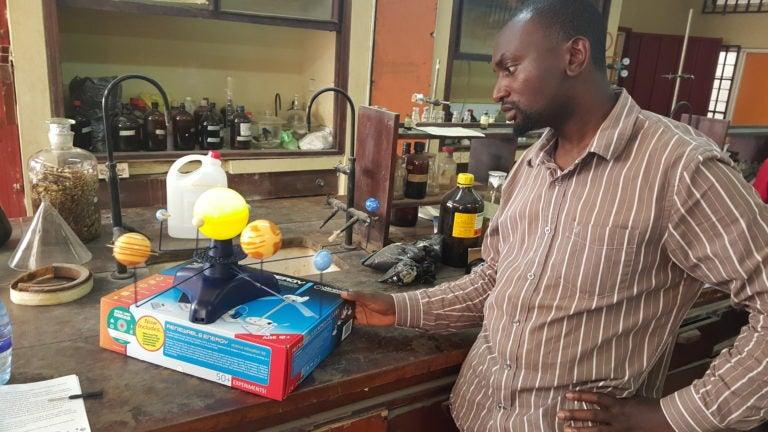
The Science in Yoruba Project (Taofeeq Adebayo)
The Science in Yoruba Project has two main goals. The first goal is to translate a Basic Science textbook from English into Yoruba. Taofeeq Adebayo collaborated with Oyetayo Babatola, Samuel Jegede, Samuel Awelewa, and Eriife Mofoluwawo who are graduate students at University of Ibadan (UI), specializing in Yoruba/Linguistics, Microbiology, Physics and Chemistry respectively. In about 8 months, they were able to translate Learn Africa’s Basic Science 1 into Yoruba. They also translated a newer version of the textbook which was published during their initial translation. The second goal of the project is to teach the translation to Junior Secondary School 1 students (grade 7 students) in Nigeria. They accomplished this by partnering with three schools in Ibadan (Ajibode Grammar School, Abadina College, and Orogun Grammar School) where they taught the translation to more than 237 students for four months with the aid of the outreach materials provided to the project by the Chemistry Department at Tulane through the Chemistry Department at UI. While Adebayo and his colleagues are still conducting statistical evaluation of the students’ result and gathering teachers’ evaluation of the project, some of the outcomes they have identified are that (i) the project helped some students distinguish between science and folk science, (ii) it increased the students’ classroom participation, and (iii) it improved the students’ interest in science. Adebayo and his colleagues are currently working on an academic paper where the results and the methodologies of the project will be reported. They are also working on publishing the translated textbook.
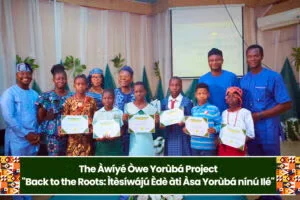
Adebimpe Adegbite, Yoruba Language and Culture Instruction in Ile-Ife, Osun State, Nigeria
My PES project explored Yoruba proverbs as an instructional tool in the teaching of Yoruba language and culture; location was Ile-Ife, Osun state, Nigeria. The primary focus of this community engagement was to provide a suitable framework for the teaching of Yoruba language and culture using proverbs. As opposed to teaching frameworks in schools which are designed to be facilitated by trained teachers/instructors, this framework was simplified in a way that it is not only accessible to children and parents within the home but is also interesting to be taught and learned.
The community engagement was done in four stages: Stage 1 (Material development): this stage included the drafting and publication, in August 2022, of a book of proverbs titled Àwíyé Òwe Yorùbá, a child-friendly textbook that contains Yoruba proverbs, translation, and meanings within a framework that includes questions and activities for competence evaluation. Stage 2 (Participant recruitment): thirty(30) child-participants were admitted into the teaching and study group for the community engagement. The initial evaluation of participants included reading recordings, interviews, and questions related to the attitude of parents and children to Yoruba language and culture learning as well as the actual use of the language and competence in the home. Stage 3 (Language instruction): this was 1-2 hours for two, sometimes three days a week outside of school time for three months. Participants were provided with the resource book, learning materials e.g., writing books and pens, refreshments, and transportation allowance (all free of charge). Stage 4 (Post-project evaluation): the post-project evaluation took the form of surveys, informal conversations, interviews and reading recordings. It also included collection of feedback from participants and their parents for the improvement of the instructional resource. Upon the completion of the community engagement sessions, the resource material — Àwíyé Òwe Yorùbá was adopted by two states, Ò̩yó̩ and Ò̩s̩un, in southwestern Nigeria to be used as supplemental Yoruba texts in Junior Secondary Schools, Senior Secondary Schools, and Technical Colleges across the states.
A Communicative Approach to English Language Instruction (Japhet Ajani)
Article on Project in Nigerian Tribune
Thinking back in time about the society I grew up in back in Nigeria, the friends I grew up with and the parents I have, I have been reassured that education has a greater impact in the making of who one becomes. Nigeria, being a former English colony, has identified the role of the English language as sine qua non in educational instruction, academic, economic and political discourses in the country. Therefore, to make a successful life in a country like Nigeria, one has to be proficient in the use of the English language. The teaching of the language, however, lacks requisite and modern instructional methodologies (for example the Communicative Teaching and Backward Curriculum Design), those that have been tested and proven to enhance language teaching in primary (elementary) and secondary (high school) schools in advanced countries of the world. Given this observation, I have been reminded, as well as compelled, by issues, people and my passion to address the dwindling state of English language teaching in my community – Ogbomoso, Oyo State, Nigeria. Ogbomoso is one of the foremost cities in the South-Western part of Nigeria.
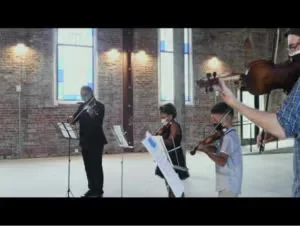
Make Music NOLA Curriculum Expansion and Method Book Project (Mohamed Amine Belkhouche)
My PES-funded community-engaged scholarship project led to a collaboration with a local community music education organization, Make Music NOLA. Make Music NOLA’s connections with the Center for Public Service are extensive, with Tulane students serving as music mentors. daily activities include leading orchestra instruction for small groups of elementary-aged children through their service-learning coursework. Make Music NOLA engages in community music education for social change, “creating access and opportunity for students who are eligible for free or reduced lunch in Orleans Parish through intensive music training.”
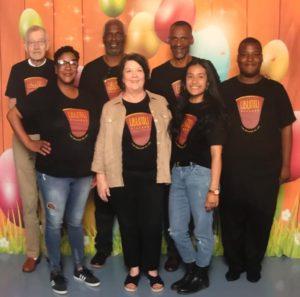
Parents for Juvenile Justice (Genesis Calderon)
This PES Project was a fusion of the vision of Ubuntu Village as a parent advocacy organization and my own knowledge of sociolinguistic impact in the world. Ubuntu Village works within the Black community in New Orleans to empower and capacitate families affected by the Juvenile Justice System.
In this project a small group of 6 parents and family members met to create a short video explaining key legal terms that will be freely available to new families seeking more information on the Juvenile Justice System. The production of this video weaves together various strands of participatory and inclusionary work. In formulating questions, meeting with court stakeholders, and putting together the script, parents were able to direct the focus and attention given to their perspectives on the juvenile justice system. An expressed goal of Ubuntu is to aid in parent organizing – this project added to the foundation of the organization by giving our parent-team the opportunity and space to learn together, relying on each-other to help put materials together. The final products will be a short video, infograph outlining a map of the court system, and an op-ed piece published in one of the local newspapers.
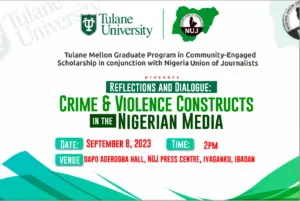
Reflections and Dialogue: Crime and Violence Constructs in the Nigerian Media (Olamide Eniola)
Community Engaged Archeology in Maya Biosphere Reserve, Petén, Guatemala (Kirsty Escalante)
Conservation in Mesoamerica’s largest remaining forest is a delicate balance, but community- based forest management organizations have had great success in managing the forest ecology. In collaboration with the Asociación Forestal Integral San Andres Petén (AFISAP), a community-based cooperative, Kirsty Escalante has been working to support AFISAP in their goals to protect the natural and cultural resources in Guatemala’s Maya Biosphere Reserve. She is currently developing workshops about the archaeology of the region to help AFISAP members recognize and document archaeological sites, record looting, and protect archaeological materials in order to bolster AFISAP’s abilities to manage the cultural resources within their territory.
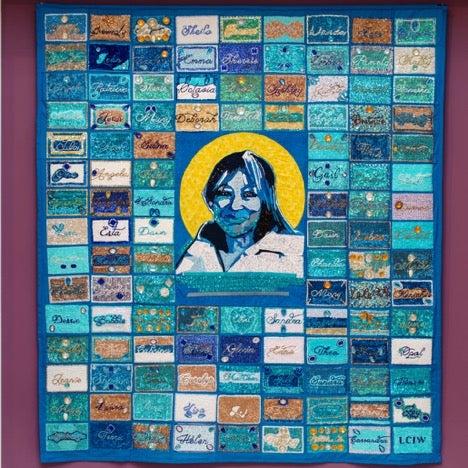
Per(Sister): Incarcerated Women of Louisiana (Megan Flattley)
As a PES fellow, I worked as a Curatorial Research Assistant on the exhibition Per(Sister): Incarcerated Women of Louisiana. To develop the exhibition, the Newcomb Art Museum partnered with formerly incarcerated women, community organizations, and others directly impacted by the carceral system in order to shine a light on the myriad issues pertaining to women and incarceration in Louisiana. I worked with museum staff and community partners to articulate the themes of the exhibition through original artworks, free and public programming, exhibition design that facilitated the active participation of visitors, and the printing of several publications as well as the website persister.info
As an art historian, I have always thought critically about how museums shape knowledge. As a community-engaged scholar, I have also always been aware of the perceived inaccessibility or irrelevance of art museums. Thus, a large part of my community-engaged scholarship considers how museums can become increasingly accessible, and meaningful, to widening sectors of the population. My work with the Newcomb Art Museum provided me with the opportunity to consider what it can look like when communities have their voices amplified and are brought into the creative process of exhibition building. It has also shown me how an art museum can exist as a space in which conversation is facilitated, collaborative relationships are established, and community sentiment is built.
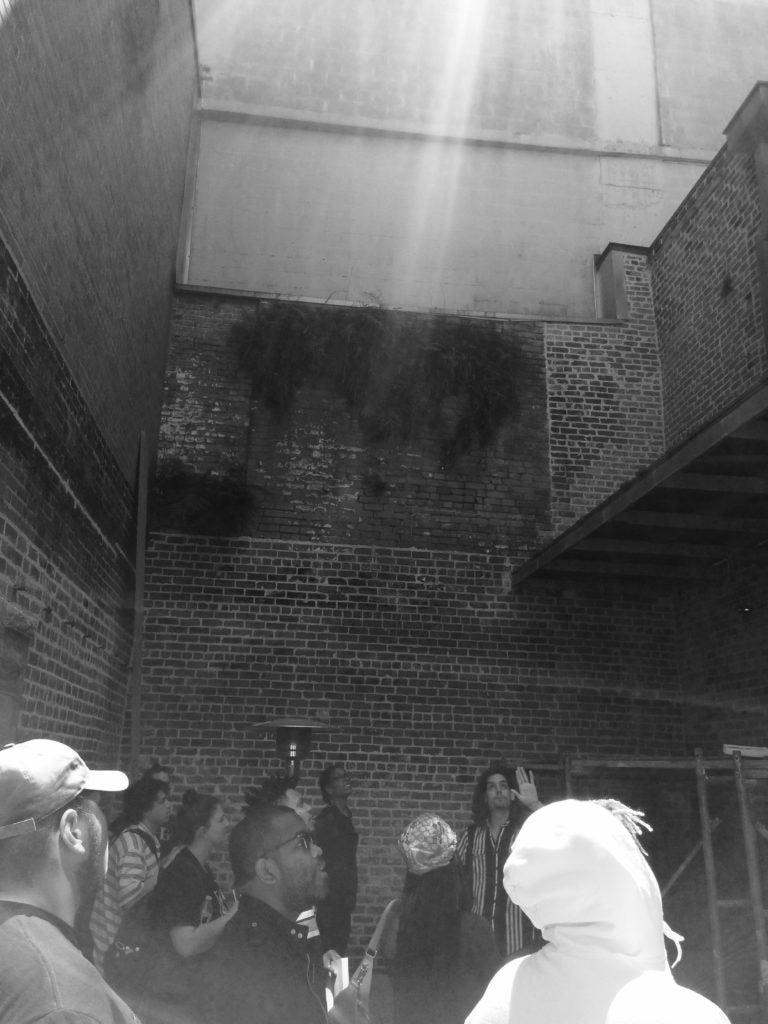
Cultivating New Orleans’ Performance Communities with Beaubourg (Chris Givens)
The Beaubourg Theater is a young arts organization and venue centrally located at 614 Gravier Street in downtown New Orleans. Beaubourg aspires to be a site where the range of performance work being created in all corners of the city can converge and cross-pollinate. A main goal of its mission is to actively foster the creation of new work by emerging artists in the city and offer a platform for a variety of voices. Support from the PES Program has helped facilitate the launching of a new artist-in-residence program which will be an invaluable addition to the creative opportunities currently available for local performance artists. This program supports a variety of artistic research activities from dance to theatre and beyond, offering a month of rehearsal space, a project award, peer dialogue, professional mentorship, and the opportunity to give a public showing at the venue. Along with this program, a new free class and workshop series will provide a stipend to local teachers who specialize in movement, voice, acting, dance, and other areas of arts education. These free classes will occur regularly throughout the Fall of 2019 at Beaubourg and be open to everyone. With these programs, we hope to strengthen existing creative communities and facilitate new collaborations and experiments across diverse backgrounds, abilities, interests and disciplines. Tulane’s School of Liberal Arts published a piece on Chris’s work.
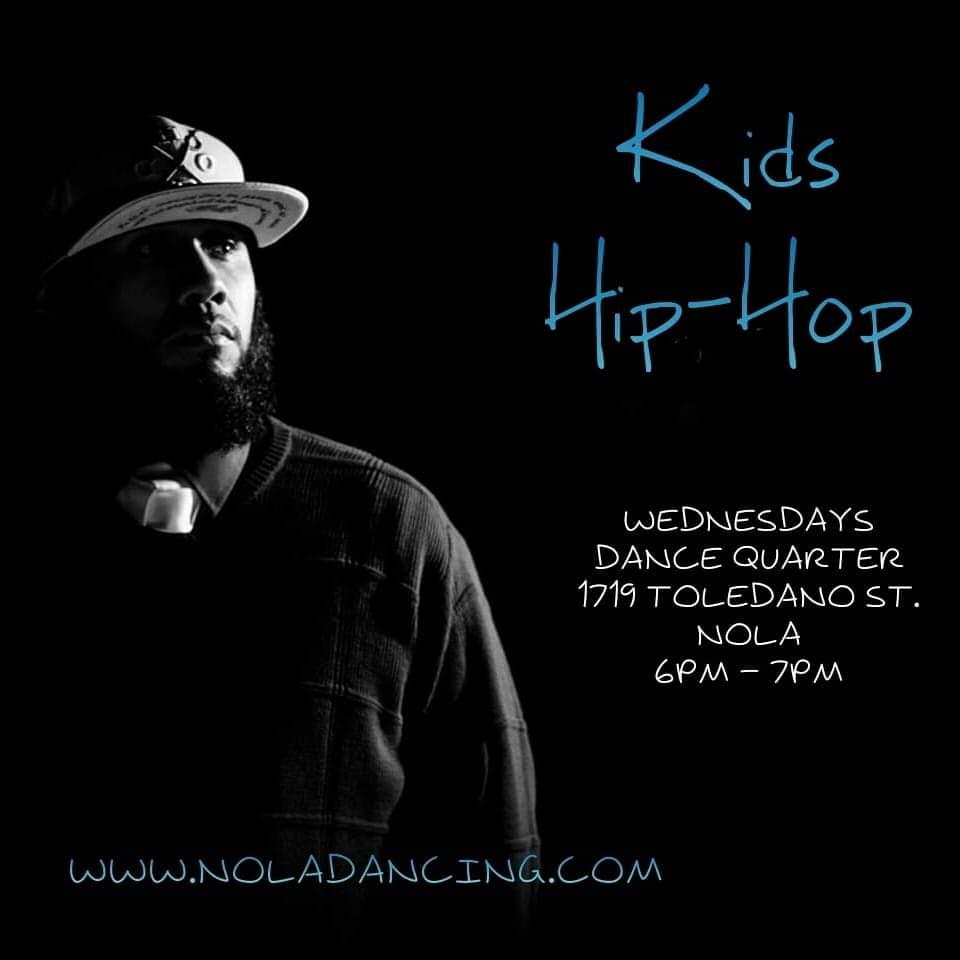
The “Dancership” Program in Central City (April Goltz)
For my PES project, I partnered with Dance Quarter, a community dance school located in Central City. Since having moved to the area, I had been attending classes and teaching there, but observed that very few other people from the neighborhood were involved. Through my conversations with neighbors, I learned that there were many skilled dancers and potential students in the immediate area, but most hadn’t heard of or been to Dance Quarter.
My project sought to better integrate Dance Quarter into its surrounding neighborhood by diversifying its course offerings, student body, and faculty to better reflect the interests and identity of the residents of Central City. A primary issue for many residents was the cost of classes, so we created the DANCERSHIP program: a scholarship covering full tuition for one or more classes available to any resident of Central City.
A second issue was that Dance Quarter had never offered classes for kids, so we added a kids Hip Hop and a kids swing class. Currently, we are in the process of bringing on new faculty members who are residents of the area to teach drum majorette and liturgical classes, dance styles with deep roots in the community.
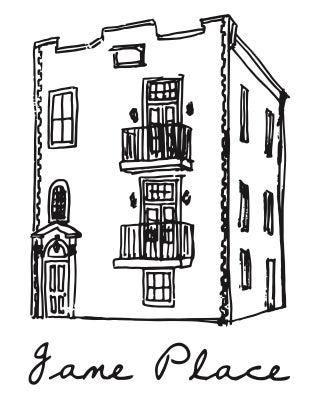
Developing a Renter’s Guide to Low Income Housing Tax Credits (Theo Hilton)
My PES-funded community engaged research project is a collaboration with Jane Place Neighborhood Sustainability Initiative, a community land trust based in Mid-City. In addition to providing permanently affordable housing units, JPNSI produces cutting edge policy oriented research on housing trends in Orleans Parish. After 53 low income families were evicted from a local privately owned subsidized housing development, folks at JPNSI were curious about the future of other middle and low income housing units in the city. Since developers use a number of tax incentives and grants, which come with numerous different requirements for providing affordable units, ascertaining the future affordability of housing indeed proves quite difficult.
Guided by my advisors at JPNSI, I researched tax credit contracts at the Orleans Parish Land Records Office to compile a database of properties that had participated in the Low Income Housing Tax Credit program. I am now working with the organization to produce a guidebook and website to help renters and activists better understand the constellation of programs controlling affordable housing on the private market, and the state of affordable units in Orleans Parish specifically. This report should be completed by the end of 2019.
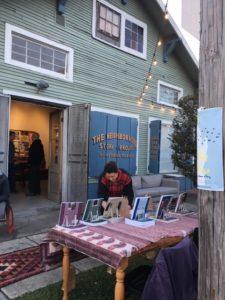
Arianna King, Neighborhood Story Project
Arianna King worked with The Neighborhood Story Project (NSP) is a nonprofit collaborative ethnography organization, which uses the strategies of storytelling, knowledge-sharing, and the joy of co-creativity to produce books, events, exhibits, and curricula with New Orleans artists, musicians, and cultural performers. In collaboration with the NSP this PES project utilizes the knowledge and skills of the NSP network of co-creators to consider the power of people to transform the spaces they occupy. Through a series of cultural events—an altar-making workshop, beading workshops lead by Mardi Gras Indian elders, concerts, art exhibits, and open workshop hours—this on-going project strives to collaboratively reflect on the ways in which those who inhabit the NSP workshop, located in the 7th Ward of New Orleans, dynamically transform the space. This project uses ethnographic methodology to document the process by which the blank canvas of NSP’s workshop comes to be shaped by and eventually reflect those involved in each event. This on-going reflection will contribute to the production of an NSP poster (or series) that celebrates the dynamism of the NSP community and their collective power to shape space in the community. This community engaged ethnographic research will also serve as the basis for a co-authored journal article reflecting on the intersection of space and co-creativity in community settings.
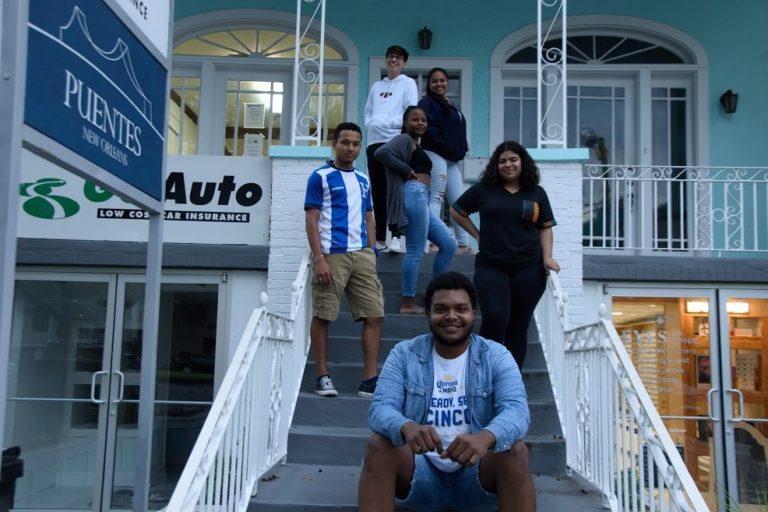
Digital Narrative Therapy with Latinx Youth – Dr. Jenn M. Lilly
Working with youth involved with my community partner, Puentes New Orleans, I conducted a series of personal storytelling and filmmaking workshops, integrating therapeutic practices from collective narrative therapy to provide a healing experience for participants. Collective narrative therapy is a post-structuralist, non-pathologizing approach to working with communities to author their own stories, highlighting their resilience and resistance to the oppressive structures that impact their lives (Denborough, 2008, 2012). Using collective narrative therapy practices throughout the workshops, Latinx youth engaged in collective meaning-making processes by sharing and documenting stories of the challenges they’ve faced as Latinx young people in New Orleans, and the ways in which they’ve coped with, responded to, or overcome those challenges. Through a group-based, collaborative, and participatory process, participants shared their own stories, and listened to and documented the stories of their peers, recognizing similarities and differences amongst their stories, and drawing connections to the broader systemic systems and structures that impact their lives. After recording each participant’s story through an intensive story-circle process, youth worked individually or in teams to create a narrative using digital media (video, photos, music, narration, and animation). Two individual short films and one collaborative short film were produced by the youth through this process. The project fostered self-expression, agency, and voice, allowing youth to explore issues of race, ethnicity, cultural identity, and the Latinx experience in New Orleans.
This project has been featured in 64 Parishes Magazine, in an article published by Jenn titled Making Connections: A Reflection on Narrative Group Work with Latinx Youth, and in several conference presentations. See pictures from Jenn’s project below.
Horns to Havana (Lilian Lombera)
Lilian Lombera has spent her time during her PES Fellowship working with community partner Maroon Queen Cherice Harrison-Nelson and the Trombone Shorty Foundation. In January 2020, the Trombone Shorty Foundation and Cuba Educational Travel partnered with multiple musicians, artists, and students from Cuba and New Orleans to create a five day musical and cultural event in Havana. Please see the this local news article and video below for more information.
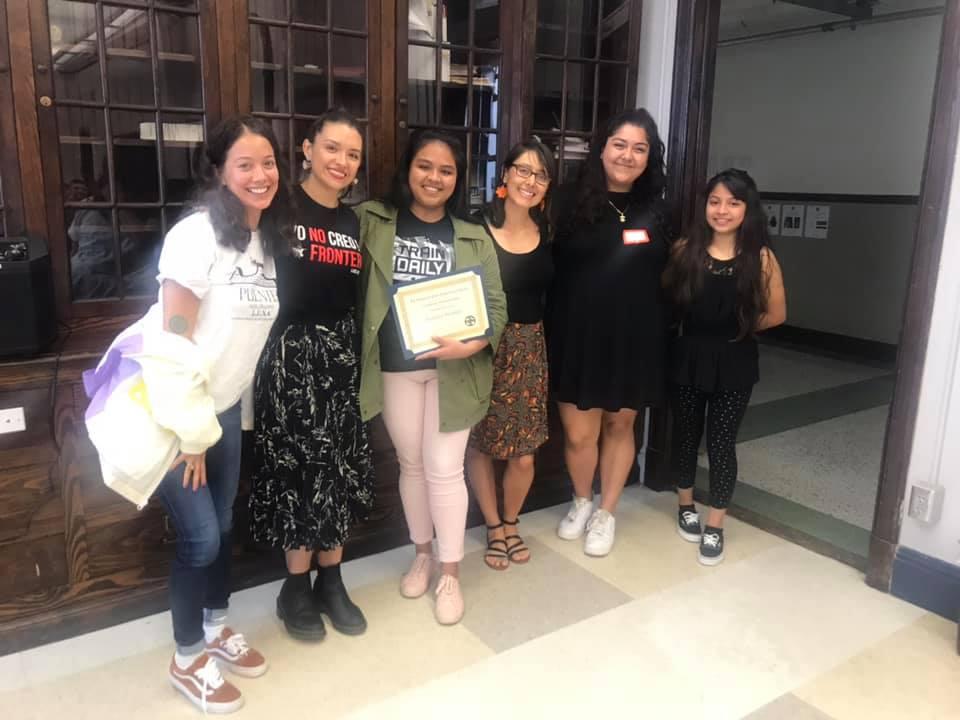
The Immigrant Youth Empowerment Forum (Ana María López Caldwell)
The Immigrant Youth Empowerment Forum (IYEF) materialized after a group of dedicated youth, community members, and scholars got together to brainstorm ways in which they could work together to support immigrant students. The group identified that there are some great organizations already working in New Orleans to support this population. As such, the main role became to help connect students to a variety of resources. To this end, on May 4th, 2019 the Immigrant Youth Empowerment Forum hosted its first annual forum. The event was dedicated to support immigrant youth in achieving their educational goals, attending to their academic, legal, and financial needs. Six $1,000 scholarships were distributed as well as a seventh scholarship funded by donations from attendees and organizers.
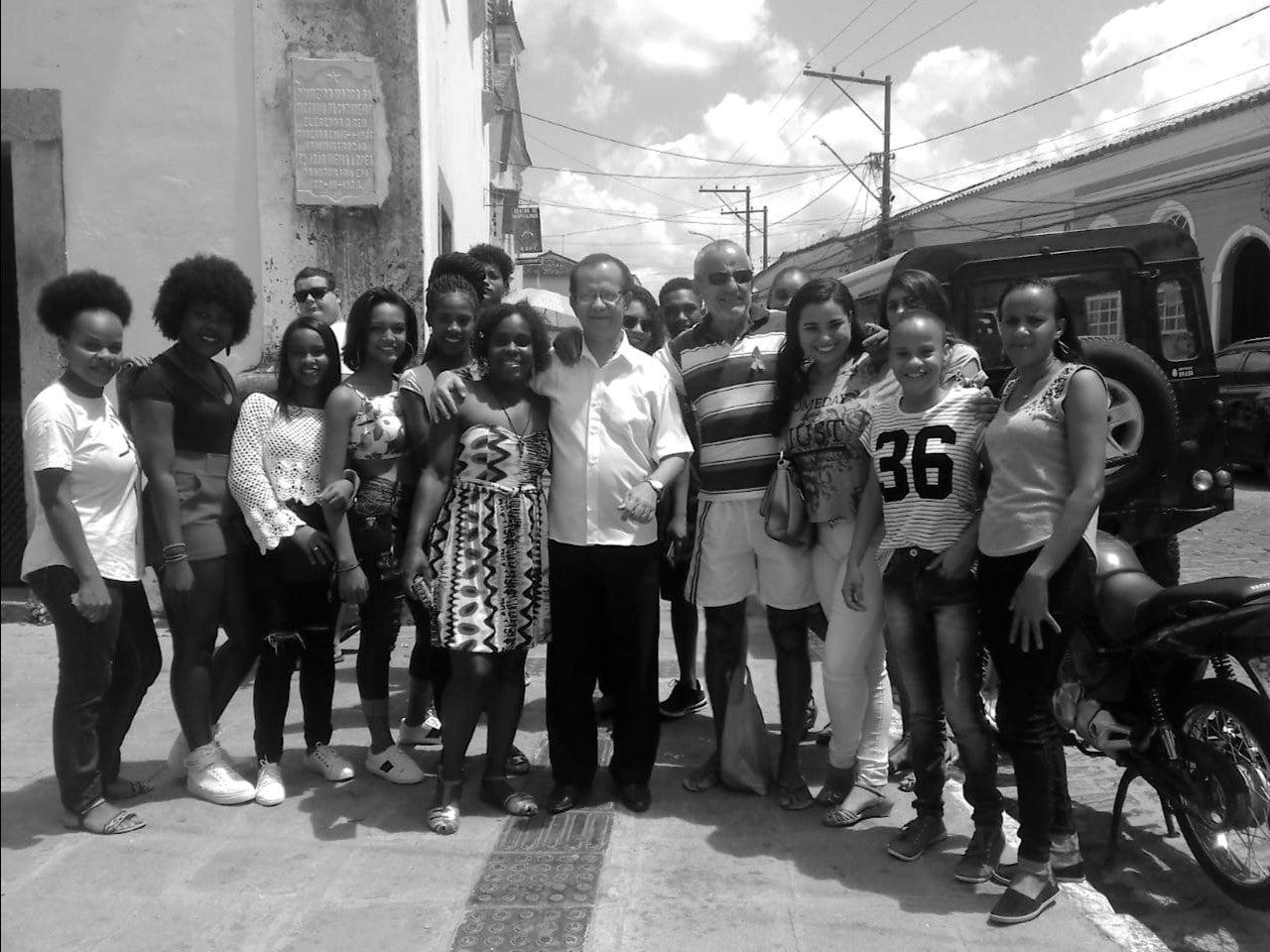
Black Community USA / BRAZIL (Sedrick Miles)
My project is a part of a larger transnational dialogue between African Americans and Afro Brazilians. The foundation of the project is a unique partnerships between two small Brazilian grassroots organizations, Bahia Streets (an after school enrichment program) and Colegio Estadual Eraldo Tinoco: Comunidade Quilombola (a Quilombo school). Local activist and cultural consultant, Alex Alberto Santos de Jesus provided critical liaison work.
With school director, Ana Clara Amorim, we designed a program leveraging the community partner funds to allow 20 students and parents to attend the annual FLICA literature festival in the neighboring historic city of Cachoeira. FLICA is an international literature festival. Every year, writers of different cultural backgrounds meet to discuss and interact with the public. Politics, history, music, biographies, religion, fiction literature, and literary creation are themes of the FLICA program schedule. The event attracts more than twenty thousand visitors to Cachoeira, a city which provides the perfect backdrop for this highly popular festival.
The PES funds were leveraged to provide transportation, lodging, meals, and a book allowance for the students. The students attended special lectures with notable writes including Afro Brazilian feminist philosopher Djamila Ribeiro and Black American intellectual and professor Patricia Hill Collins.
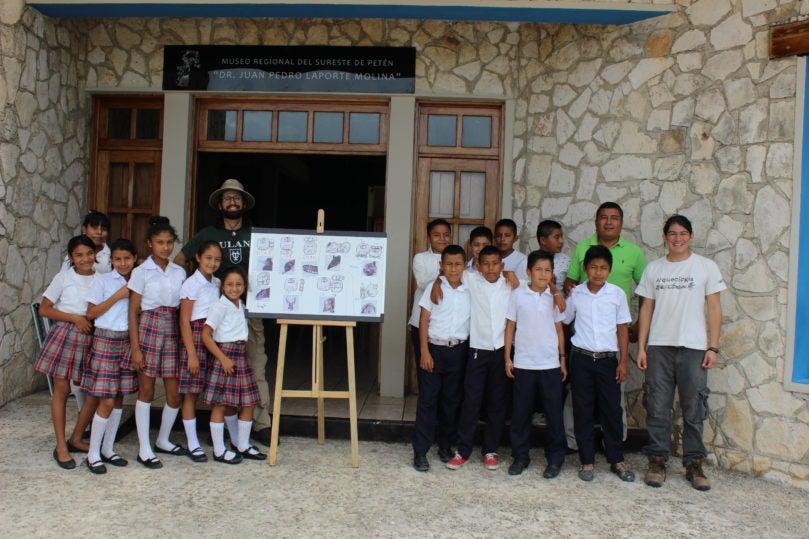
Maya Scripta (Rubén Morales Forte)
During the last year, together with a Guatemalan university (Universidad del Valle de Guatemala), I have been developing an online platform which holds a database of Maya hieroglyphic inscriptions. The site is called Maya Scripta and it can be accessed through the website cds.uvg.edu.gt. As part of the PES Project, in the past summer, the team worked with the Regional archaeological museum in Dolores, Southeastern Petén, Guatemala, to increase the number of visitors, to improve the visitor’s experience, and foster the knowledge local people have about the ancient Maya. In order to achieve this, we had three axis of work: Marketing, exhibition, and education. Regarding the marketing, two old billboards in the highway were replaced with new ones. This time, they were elaborated by a professional designer and printed in high-quality material.
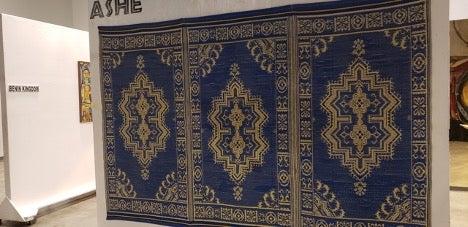
Benin Republic Pavilion (Sarah Reynolds)
I’ve spent my time as a PES fellow working with Ashe Cultural Arts Center- a cultural center in New Orleans whose mission is to showcase the culture and contributions of people of African descent throughout Africa and the diaspora. Ashe’s mission fell totally in line with my own interests and research. My research as a Ph.D. anthropology student looks at conceptions of religion and spirituality in the three major religions of southern Benin Republic- Vodun, Christianity, and Islam. As a PES fellow I worked with Ashe to put together a country pavilion on Benin Republic in November 2019. This pavilion consisted of a lecture by me, an art exhibit, fieldtrips for groups of school children (including storytelling, crafts, and dance classes), the compiling of an educational pamphlet on the country for all exhibit visitors, and West African cuisine. The pavilion also made a space for an exhibit on the Benin Empire- which was located in what is now Nigeria- but is often confused with Benin Republic by many. My project at Ashe also relates to my academic research because I spent a fair amount of time during my preliminary doctoral fieldwork in Benin in summer 2019 learning about and procuring- for the exhibit- common items which were very representative of daily life in Benin. The bits of everyday knowledge that I learned during this artifact acquisition process will be helpful during my future, long-term fieldwork.
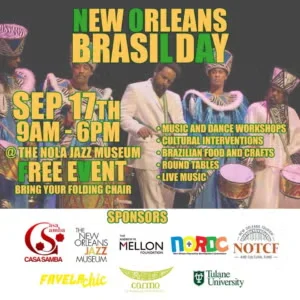
New Orleans Brasil Day (Geovane Santos)
In collaboration with his community partner organization—Casa Samba, a New Orleans-based Brazilian Culture organization whose mission is to educate the local community about the rich cultural traditions of Brazil and the similarities which bridge Carnival in Brazil with Mardis Gras in New Orleans emphasizing the importance of their African traditions and influences—Fellow Geovane Santos organized the 1st Annual New Orleans Brasil Day. The 1 st annual NEW ORLEANS BRASIL DAY at the NOLA Jazz Museum was held on September 17th, 2022. The festival consisted of a day-long cultural and educational activities centered around the traditions of Brazilian music, dance, and food spanning the museum’s indoor and outdoor grounds, likewise accompanied by virtual live streams for inclusive digital viewership. The festival’s theme was memory, and notably celebrated Mestre Curtis Pierre’s cultural legacy and New Orleans’ first samba school / Brazilian themed carnaval krewe, Casa Samba, 34 th anniversary of community service. The event was free and open to the public with lectures, workshops, cultural interventions, childcare, traditional food booths, traditional crafts booths, and live music as well as dance performances, the NEW ORLEANS BRASIL DAY at the NOLA Jazz Museum is unique among other Louisiana festivals for it includes educational aspects and community participation in addition to entertainment. In its pursuit to raise public awareness of Brazil’s cultural footprint and Casa Samba’s mission in the Crescent City, the NEW ORLEANS BRASIL DAY at the NOLA Jazz Museum offers visitors a trip to Brazil at the gates of the French Quarter.
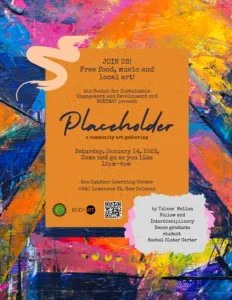
Placeholder, A Community Art Gathering (Rachel Slater)
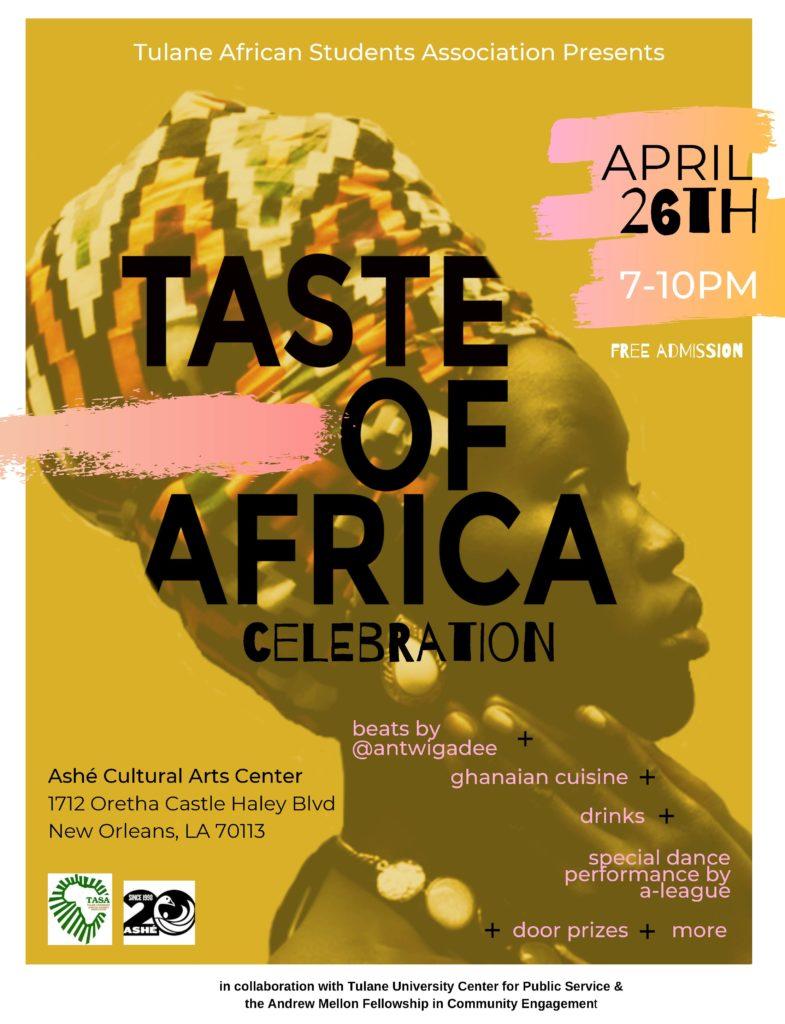
Tastes of Africa (Caleb Smith)
The Ashe Cultural Arts Center of central city New Orleans is no stranger to Tulane’s Center for Public Service. The PES program seeks to strengthen an existing partnership but through student-led efforts. Caleb Smith, a third-year doctoral student of history, began working with Ashe Cultural Arts Center in the Fall of 2017. During his tenure with Ashe, the university-community partnership aims to increase collegiate student participation at the center. Specifically, Smith works with Ashe to aid in soliciting college student and young professionals who are interested in cultural arts and nonprofit organizing and planning. In order to build a stronger adult presence at Ashe, Smith and the center’s staff are continuously reaching out to campus organizations and student leaders throughout the city who have a particular interest in planning events at Ashe and those students who are in need of nonprofit experience and cultural arts education outside of the formal academy. On April 26th, 2019, the Tulane African Student Association hosted their annual “Taste of Africa” event at Ashe. The event featured authentic Ghanian cuisine from a local community caterer. The event also featured African dancing from students of Xavier University of New Orleans. Aside from the most recent event, the PES fellowship and Ashe seeks to build its influence by developing a stronger cohort of student leaders and young professionals within the city.
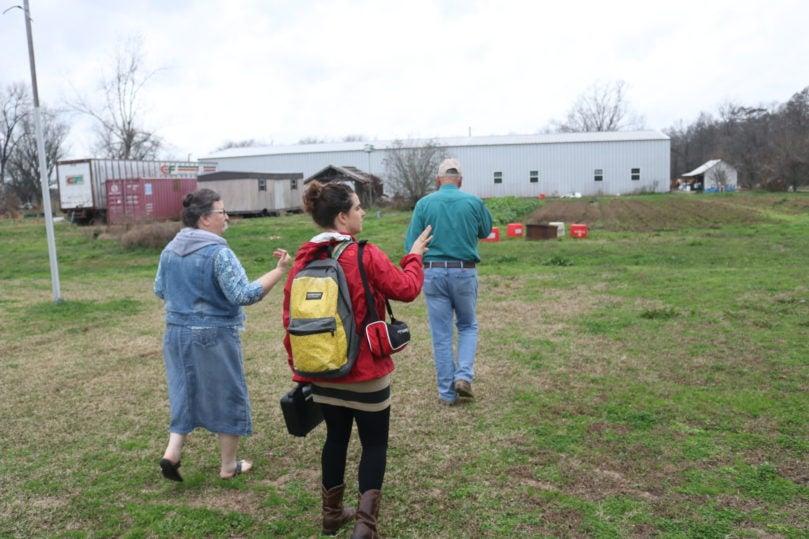
Louisiana Environmental Action Network (Chloe Tucker)
In January 2020, I spent 4 days with a team of recent Tulane graduates and current undergraduates collecting oral histories from residents of Colfax, Louisiana. The people we met with live adjacent to the Clean Harbors open burn facility. This facility, the only burn toxic materials incineration site in the lower 48, has been in operation for decades. In the past five years, the site has been awarded a contract to dispose of expired and surplus munitions–including bombs–by burning and exploding the munitions on site. The Louisiana Department of Environmental Quality notes the lack of any filtration, smokestack, or barrier technology to protect nearby residents from potentially toxic smoke. A Colfax-based coalition has worked with the Louisiana Environmental Action Network to draw attention to the disruption to bucolic rural life brought by smoke and explosions and concurrent increase in incidents of respiratory distress, thyroid disease. In one photo, courtesy of the Louisiana Environmental Action Network, my partner organization for the PES fellowship, is an image of the burn platforms in operation. The second is a shot of me after an interview held, within two miles of the Clean Harbors facility.
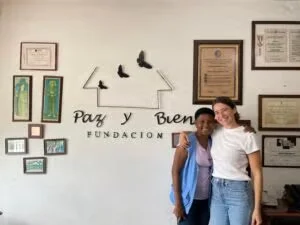
Tara Yanez Fundación Paz y Bien
Tara Yanez is a PhD Candidate with Tulane’s Roger Thayer Stone Center for Latin American Studies. Her research interests include themes around violence, cultural resistance, justice, gender, and social mobilization in Latin America.
Working in partnership with grassroots organization Fundación Paz y Bien based in Cali, Colombia, Tara co-leads women’s circles with local leaders and organizers to discuss issues of justice and security in neighborhoods with high rates of criminal violence. Based in participatory action research and community-engaged pedagogy, this form of research allows Tara to contribute findings to publications concerning security policy in Latin America while also fortifying Paz y Bien’s restorative justice programming to provide safe spaces for women to express opinions, resolve conflict, overcome past difficulties, and reimagine the futures of their neighborhoods with the support of peers and trained social workers.
